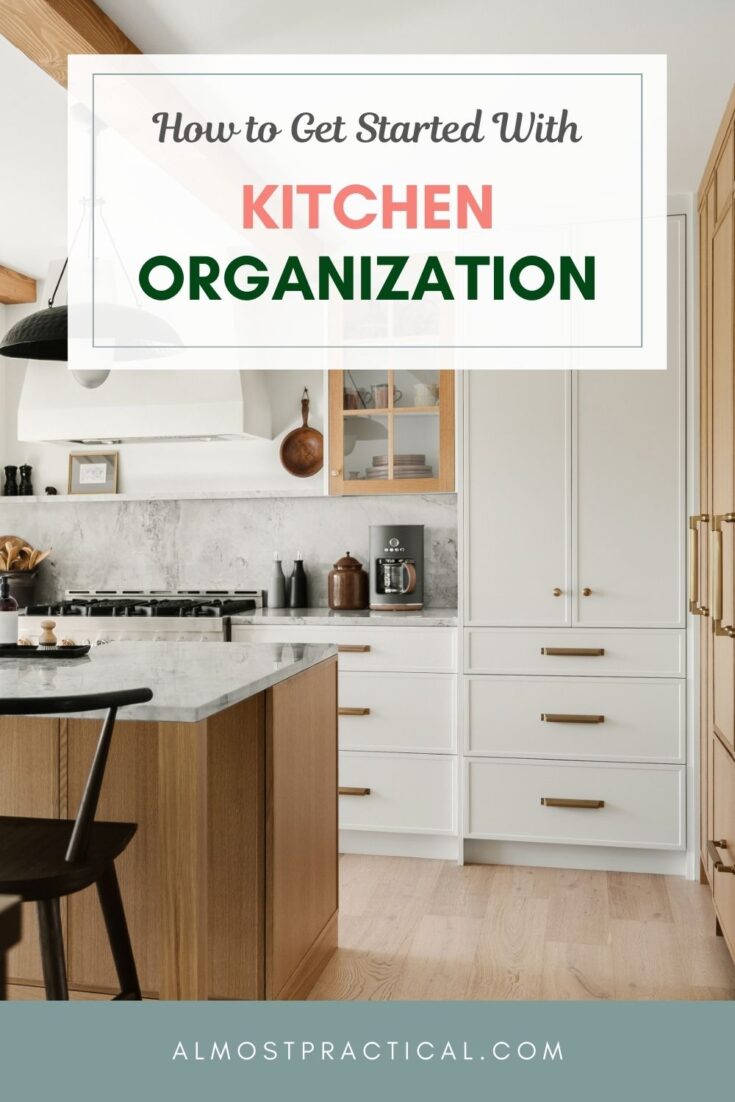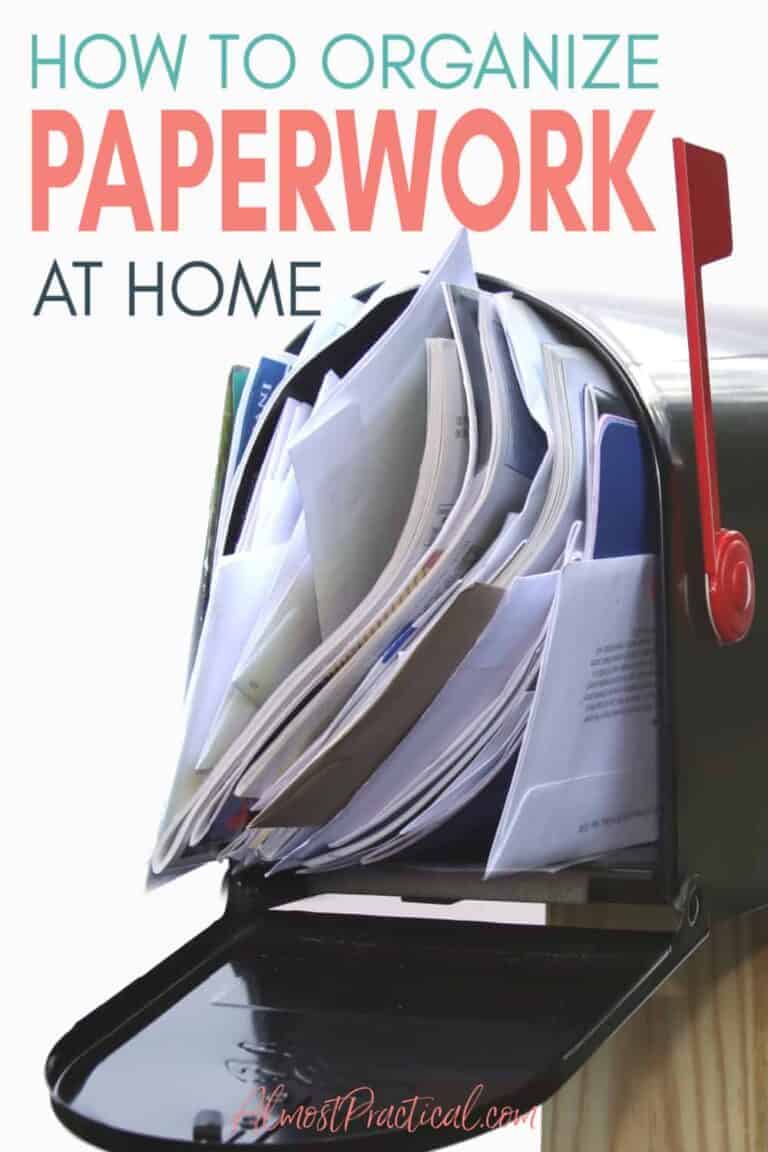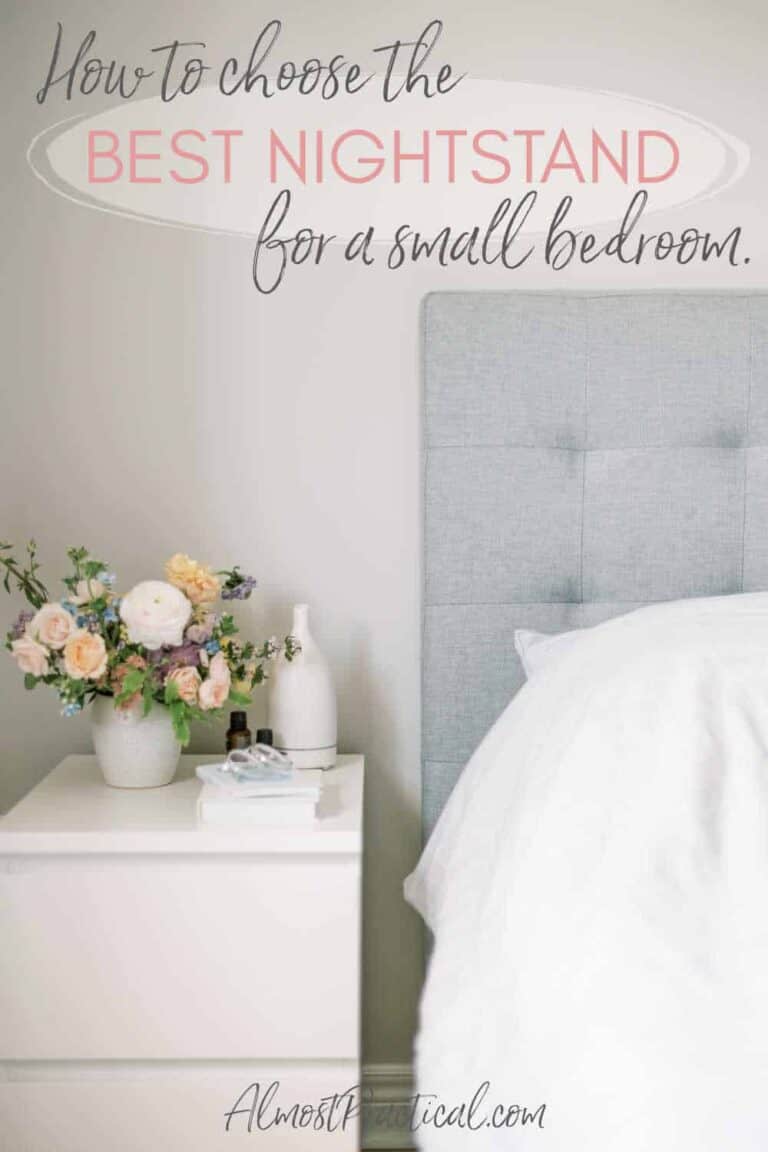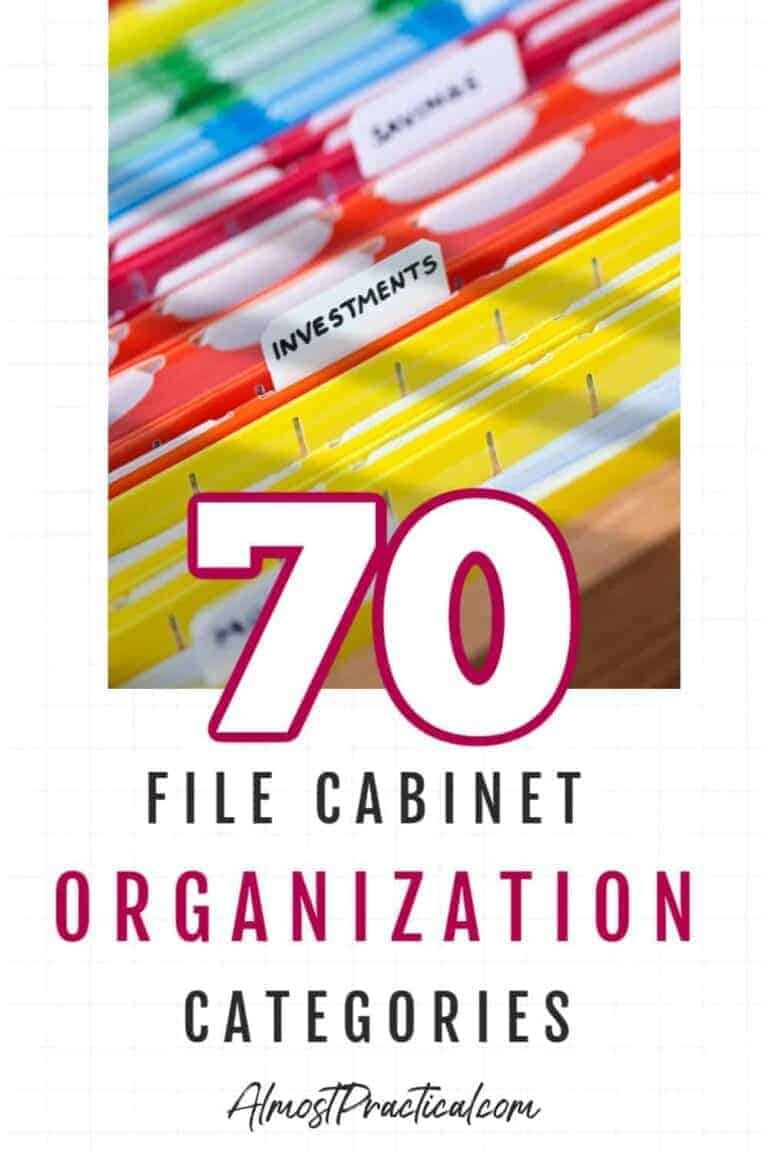Why Organizing Your Kitchen is Essential and How to Get Started
This post may contain affiliate links which means I make a commission if you shop through my links.
Disclosure Policy
The kitchen is the heart of every home. Whether you’re a master chef or simply seeking a functional space for daily meals, I cannot stress enough how important it is to have an organized kitchen.
There are so many reasons why kitchen organization is essential – but we all know how easy it is for such a busy space to turn into chaos. So, I want to provide some practical tips to help you turn this “hub of your home” into a more orderly and efficient space.
Before we get started, one thing to keep in mind is that what you see on Pinterest should serve as inspiration and not the goal. Creating a Pin-worthy kitchen is not what organizing is all about.
Rather, you want to create a functional and tidy space that works for you and your family.

What a Normal Kitchen Looks Like
The kitchen is truly the most used room in the house.
It will get cluttered, disorganized, and – to be honest – quite dirty. You can spend hours cleaning it up – and with just one complicated recipe or a few minutes after the kids get home, the whole place can look like a whirlwind went through.
For me, when the kitchen is a mess, I feel like the whole house is falling apart.
Why Kitchen Organization Matters
Keeping an organized kitchen goes far beyond the physical clutter. The benefits of a tidy space can improve our stress levels, keep food fresh for longer, maximize the feeling of spaciousness in our homes, and even result in some financial savings.
Time and Stress Management
An organized kitchen can save you precious time during meal preparation.
When you can effortlessly locate ingredients, utensils, and tools without the frustration of searching through cluttered cabinets – the whole process becomes so much more enjoyable.
Procrastination becomes a thing of the past – and you actually look forward to meal preparation.
Food Safety and Freshness
Proper organization has a hidden benefit of helping food fresher for longer. When your pantry is organized it is much easier to keep track of expiration dates.
You can keep older items in the front so they get used first, and you can plan meals using ingredients that are perishable.
You stop accumulating forgotten or expired items in the refrigerator which promotes a healthier and safer cooking environment.
Maximizing Space
Whether you have a spacious kitchen or a cozy one, effective organization allows you to make the most of your available space.
You need to make sure that you are using cabinets, drawers, and countertop space efficiently so that every inch serves a purpose.
Take note of the items in your kitchen and how you store them. Is there any wasted space that you can take advantage of? Explore products that can help you to maximize your kitchen storage space.
Often we fall into a routine of keeping appliances and dishes in the same place they have always been, even though the placement doesn’t work with the flow of the kitchen.
Financial Savings
Have you ever repurchased an item because you couldn’t find it in your cluttered kitchen?
Organizing your kitchen not only prevents unnecessary spending but also helps you make better use of what you already have.
Getting Started with Kitchen Organization
Completely organizing your space can be a process. But luckily there are some kitchen decluttering strategies you use take right away to get started and see some measurable results.
Declutter First
The easiest place to start is decluttering.
Take an objective look at your kitchen and remove things that don’t really belong there. Mail, paperwork, laundry, etc – move it all to the appropriate other rooms in the house.
Then take a quick pass at the things that remain.
Toss expired food, and ask yourself if all your pots, pans, dishes, and appliances are essential. Donate or discard items you no longer use or need.
This will create a clean slate for your organizational efforts.
Categorize and Zone
Now it’s time to get into the details.
Zones are the key to kitchen organization. They are also the one thing many people don’t do well.
Creating zones essentially means that you group similar items together based on a common characteristic.
You can create zones based on how you use something – for example, a baking zone, a cooking zone, and a snack zone. This makes it easier to find what you need when you need it.
However, I like to create kitchen zones based on usefulness and location. Let me give you an example.
Think about this: most people will store something in a cabinet or drawer where it “fits” as opposed to the place where it makes the most sense.
Before our kitchen renovation, I used to have a long, narrow drawer next to our cooktop.
I also happened to have a cookie press that was long and narrow.
It fit perfectly in that drawer – so I stored it there – in the prime real estate right next to my stove.
Did I use the cookie press every day?
No! Of course not. Probably more like once a year.
But there it sat taking up valuable space.
How Often Do You Use That Gadget?
Once I realized my kitchen organizing mistake, I tucked it away in a more remote spot and put more useful kitchen utensils in that drawer.
This saved me so much time – that I didn’t know I was losing.
When my everyday cooking spoons are in the drawer right next to the stove, food prep becomes more convenient.
And the bonus is that you can potentially free up some space on your countertop by storing your utensils in a drawer instead of in a container on the counter.
Invest in Storage Solutions
Once you have everything categorized and have an idea of where you plan to store it – it is time to explore some storage solutions.
Some common items are:
- drawer dividers,
- cabinet organizers, and
- pantry containers.
Invest in quality storage solutions that suit your kitchen layout and needs. I recommend measuring your drawers and cabinets and jotting down the inside dimensions in a note taking app or a project notebook.
One thing to keep in mind is that it might make more sense to get small individual organizers to fit your space instead of one large drawer organizer.
You can see how I used that method when I organized my silverware drawer here.
And sometimes, if cabinet space is tight – you can think outside of the box and find unique storage solutions. For example, many of these coffee cup organizers can be hung on the wall.
You can explore lots of kitchen organization ideas in my Amazon store here.
Label Everything
Labels are your best friends in an organized kitchen.
Clearly label containers, shelves, and drawers to maintain order. This simple step saves time and prevents confusion.
I like to use my Cricut Joy machine to quickly print out vinyl labels for spice jars and small bins that I use in my pantry and cabinets (especially the ones on the upper shelves that are hard to reach or see into).
Establish Regular Maintenance
Here’s the rub – a one-time organization effort is not enough. It is important to perform regular maintenance on a daily, weekly, and monthly basis.
Take a few minutes every night to “close your kitchen” before you go to bed.
Put away clutter that creeped it’s way in, wipe down the countertops, and sweep the floors.
Every week, clean and rotate items in your refrigerator, mop the floors, wipe down your cabinet doors, appliances, windows, and any trim you have in the room.
And once a month check for expired items, clean out clutter, and reassess your organization system as needed.
Kitchen Organization is Easier Than It Seems
A well-organized kitchen is a gift to yourself, offering efficiency, peace of mind, and a space where your creativity can flourish.
Kitchen organization is easy when you:
- appreciate the benefits of less stress, fresh ingredients, more space, and financial savings,
- clear the clutter,
- establish zones in your kitchen,
- find appropriate storage solutions,
- label everything,
- and keep up with cleaning daily.
Start small, stay consistent, and enjoy the transformation of your kitchen into a place of order and inspiration.
Happy organizing!







